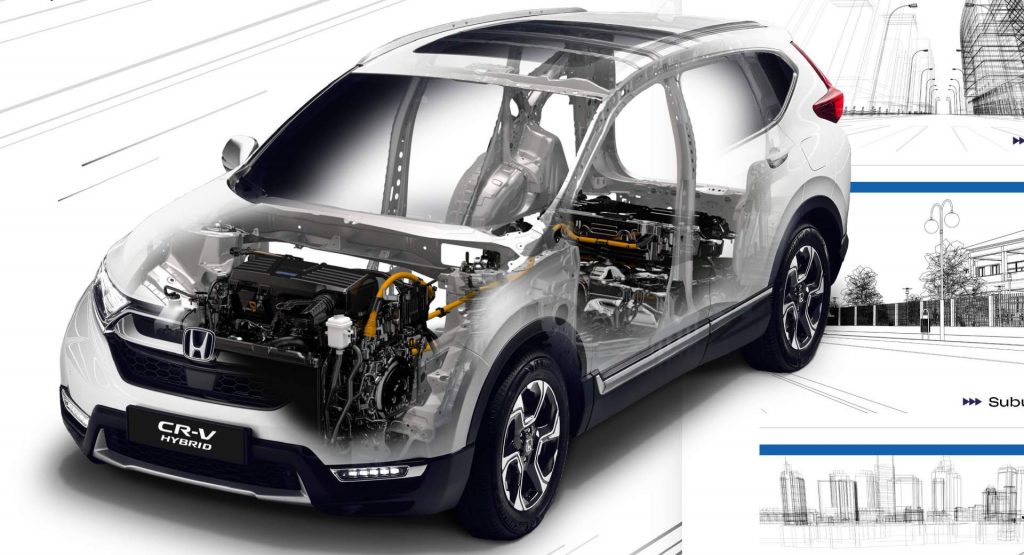Following the launch of the all-new Honda CR-V in Europe this summer with a 1.5-liter turbocharged gasoline engine, it is time for the compact crossover to add a second powertrain.
It’s the long-awaited hybrid system that makes the CR-V the first Honda hybrid model ever sold in Europe. Replacing the previous CR-V’s diesel variant, the CR-V Hybrid uses two electric motors, a 2.0-liter i-VTEC Atkinson-cycle gasoline engine, a direct transmission with a single fixed-gear ratio, and a lithium-ion battery pack.
Total system power is 184 PS (181 hp) while peak torque is 315 Nm (232 lb-ft). We haven’t got detailed specs yet so we can’t tell you how economical the CR-V Hybrid is, but we can tell you how the intelligent Multi-Mode Drive (i-MMD) technology works.
Honda’s i-MMD automatically switches between three driving modes to provide “the highest possible efficiency.” In EV Drive mode, the system draws energy from the lithium-ion battery pack to power the electric propulsion motor and drive the wheels, with the gasoline engine switched off.
In Hybrid Drive mode, the ICE powers a second motor/generator that supplements electrical energy from the battery pack. Finally, Engine Drive mode activates a lock-up clutch mechanism which creates a direct connection between the petrol engine and the wheels.
During city driving, the Honda CR-V Hybrid will toggle between Hybrid Drive and EV Drive most of the time to achieve optimum efficiency. During high-speed highway cruising, however, the Engine Drive mode is the most efficient.
At moderate cruising speeds, Honda says the CR-V Hybrid will run in EV Drive for more than half of the time, while at faster speeds, the car will use EV Drive for approximately one-third of the time. The drive status is displayed on the CR-V Hybrid’s Vehicle Driver Information Interface (DII) screen that also shows the battery charge, a graphic of the current power flow, and the recharging status of the system.
The i-MMD system will shuffle between the driving modes automatically, without any input from the driver. Honda claims the transition from one power source to another is “virtually imperceptible to the occupants” — and that includes the engine stop-start function.
Thanks to the smooth transfer of torque, the automaker says there is no driveline shunt or undesirable feedback through the pedals or steering wheel. Furthermore, the CR-V Hybrid is said to boast “outstanding quietness” thanks to the “near-silent powertrain.”
Honda will start production of the CR-V Hybrid in October 2018, with the first customer deliveries scheduled for early 2019.
Note: Honda CR-V 1.5-liter turbo model shown in the gallery
















